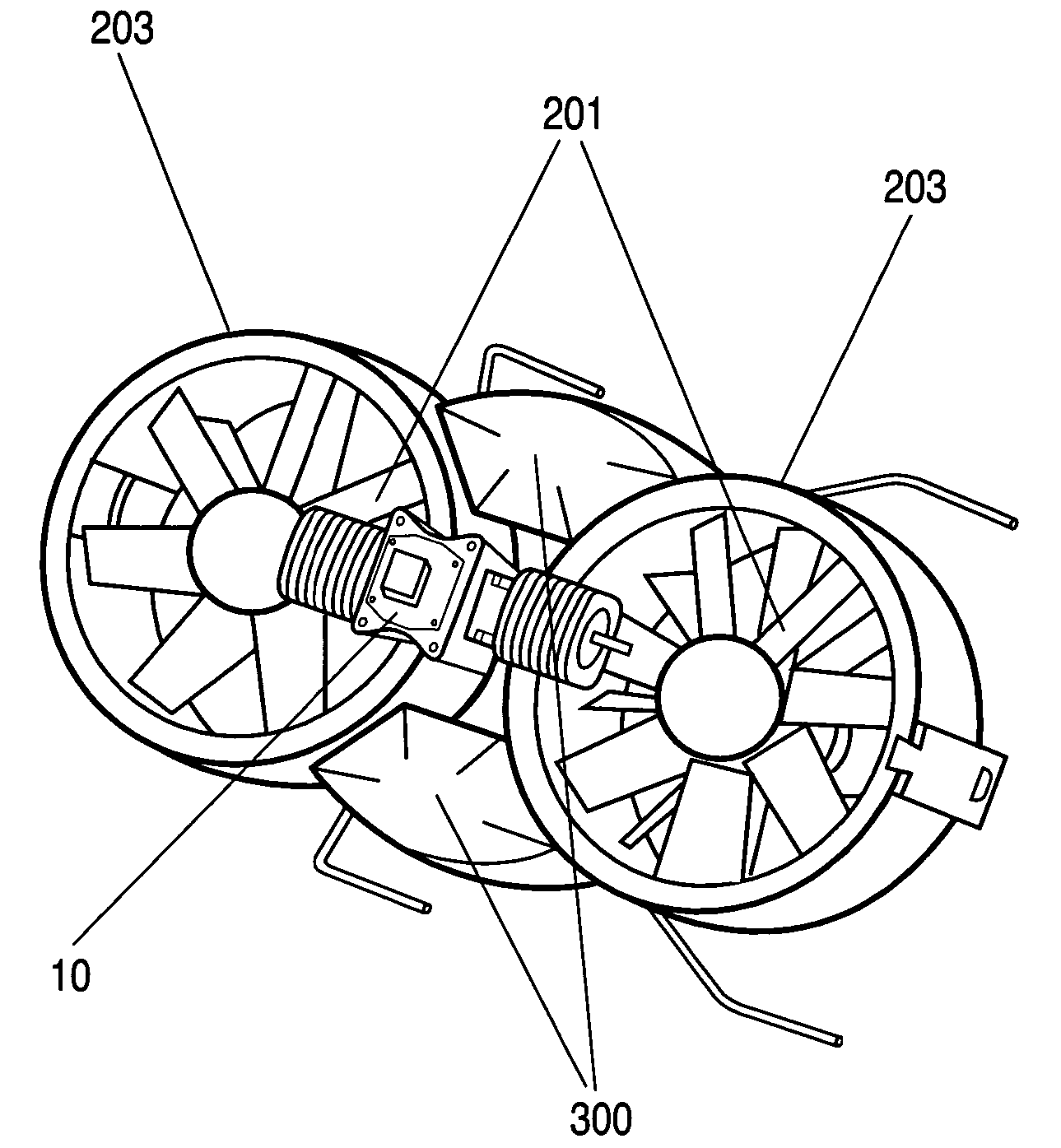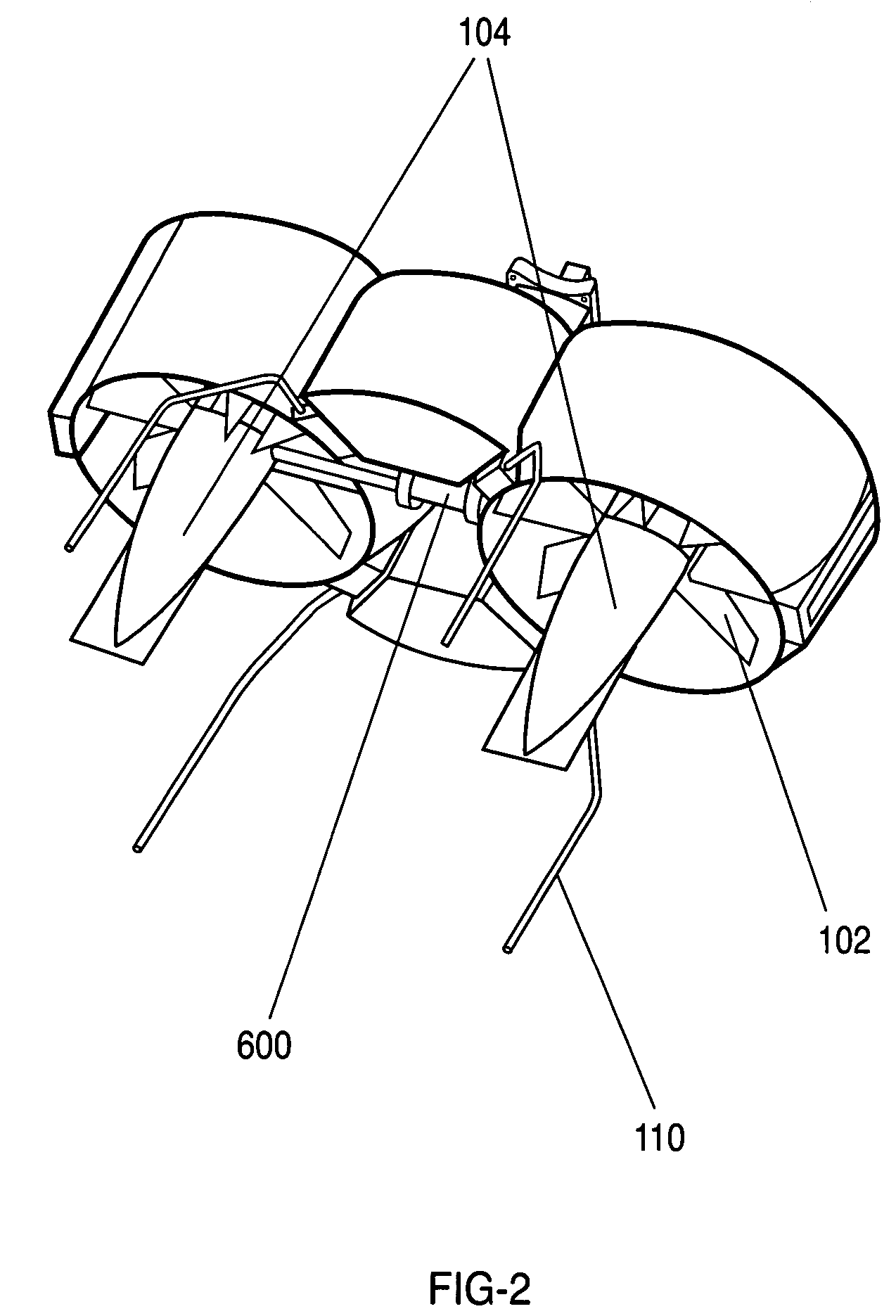Double ducted hovering air-vehicle
a technology of air-vehicle and ducted fan, which is applied in the direction of vertical landing/take-off aircraft, transportation and packaging, and lighter-than-air aircraft, etc. it can solve the problems of reduced payload and endurance, increased aero-acoustic noise signature of ducted fan solutions, and increased weight of back packing ability, etc., to achieve increased endurance, increase lift performance, and increase payload
- Summary
- Abstract
- Description
- Claims
- Application Information
AI Technical Summary
Benefits of technology
Problems solved by technology
Method used
Image
Examples
Embodiment Construction
)
[0053]Aspects of the present invention provide a system and method for construction of a double-ducted hovering air-vehicle. In the carrying of payloads the present invention has enhanced aerodynamic and acoustic performance. It also provides payload and transport packing flexibility.
[0054]Although the following disclosure will make reference to a double ducted hovering air-vehicle it should be appreciated that the present invention may have a broader applicability in the field of air-borne vehicles. Particular configurations discussed in examples can be varied and are merely cited to illustrate an embodiment of the present invention and are not intended to limit the scope of the invention.
[0055]Referring to FIG. 1 and FIG. 2, the present invention teaches the construction of a double-ducted air-vehicle assembly consisting of two ducted fan assemblies 203, two avionics / payload pods 300, a reciprocating or turbine engine 10, a differential 600, tail cones 104, and landing gear 110. ...
PUM
 Login to View More
Login to View More Abstract
Description
Claims
Application Information
 Login to View More
Login to View More - R&D
- Intellectual Property
- Life Sciences
- Materials
- Tech Scout
- Unparalleled Data Quality
- Higher Quality Content
- 60% Fewer Hallucinations
Browse by: Latest US Patents, China's latest patents, Technical Efficacy Thesaurus, Application Domain, Technology Topic, Popular Technical Reports.
© 2025 PatSnap. All rights reserved.Legal|Privacy policy|Modern Slavery Act Transparency Statement|Sitemap|About US| Contact US: help@patsnap.com



